
National Portrait Gallery of Australia
Presenting the face of our nation

The National Portrait Gallery is sited in the Parliamentary Triangle. Won through an open international competition in late 2005, the building provides exhibition space for approximately 500 portraits in a simple configuration of day-lit galleries.
The building responds to its site by connecting key vistas, levels and alignments around the precinct. Five fingers of space, arranged perpendicular to the Land Axis, refer to Griffin’s early planning concepts for the National Capital.
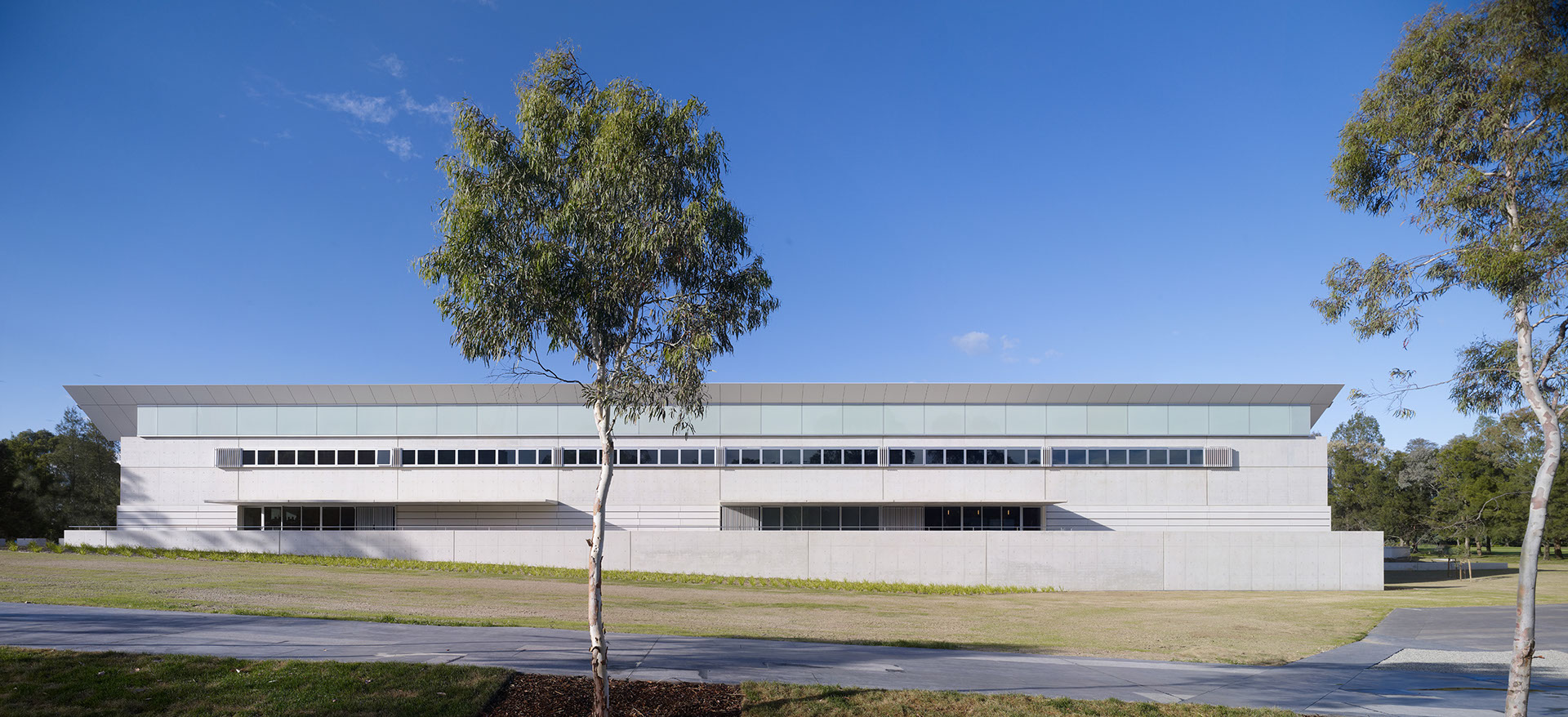
“The new NPG manages to be both discreet and monumental at the same time. The front is set perpendicularly to the main road, as if shunning the idea of a shop front. It is a long, low structure that makes all its neighbours in Parkes Place seem suddenly ostentatious. JPW’s mastery of space, light and detail in this new building is breath taking.”
John Mcdonald
Sydney Morning Herald

The building illustrates its purpose as an art gallery with two principal elements – walls for display and reflectors to control natural light. These devices, visible inside and out, are employed universally throughout the building to capture Canberra’s unique light.
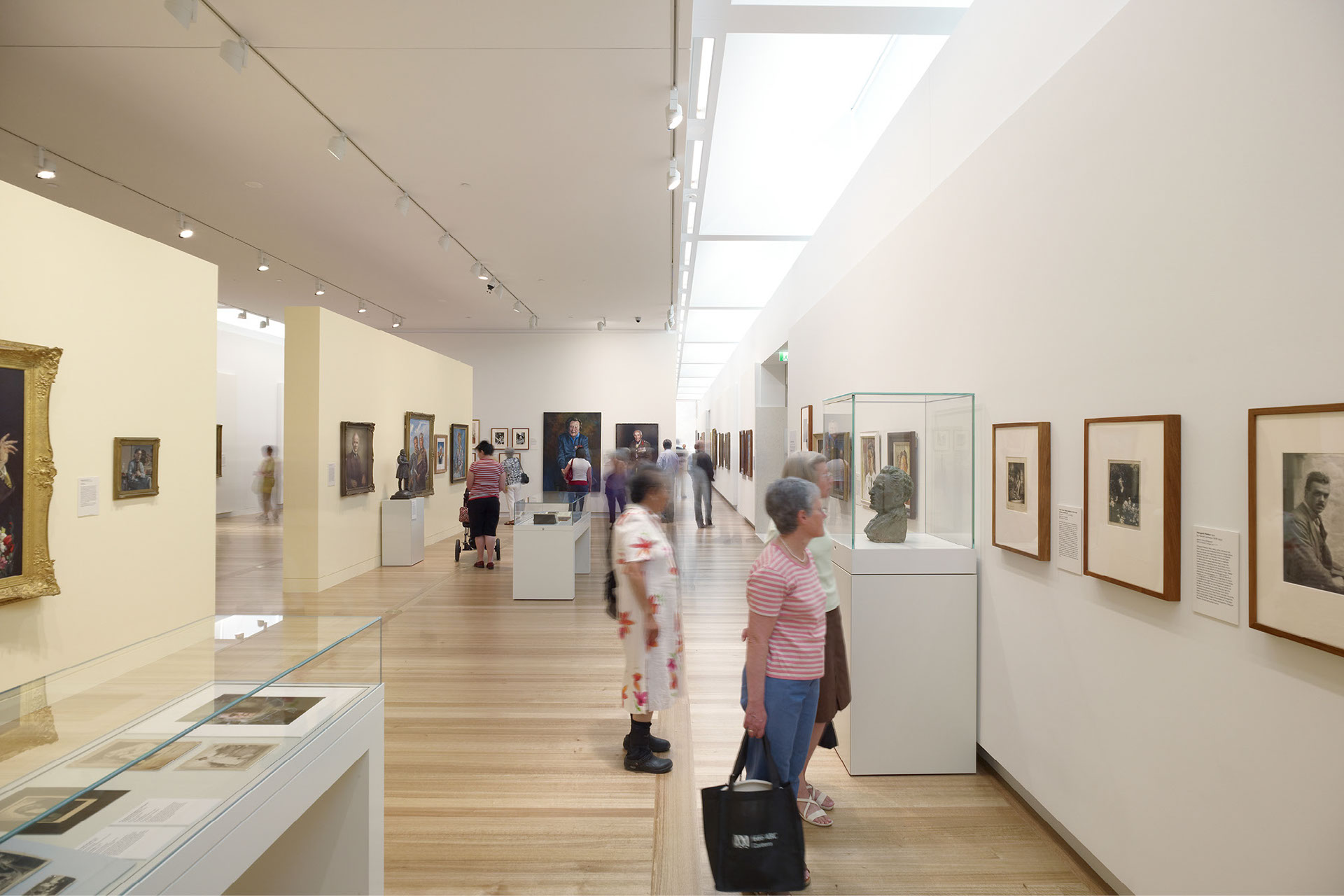
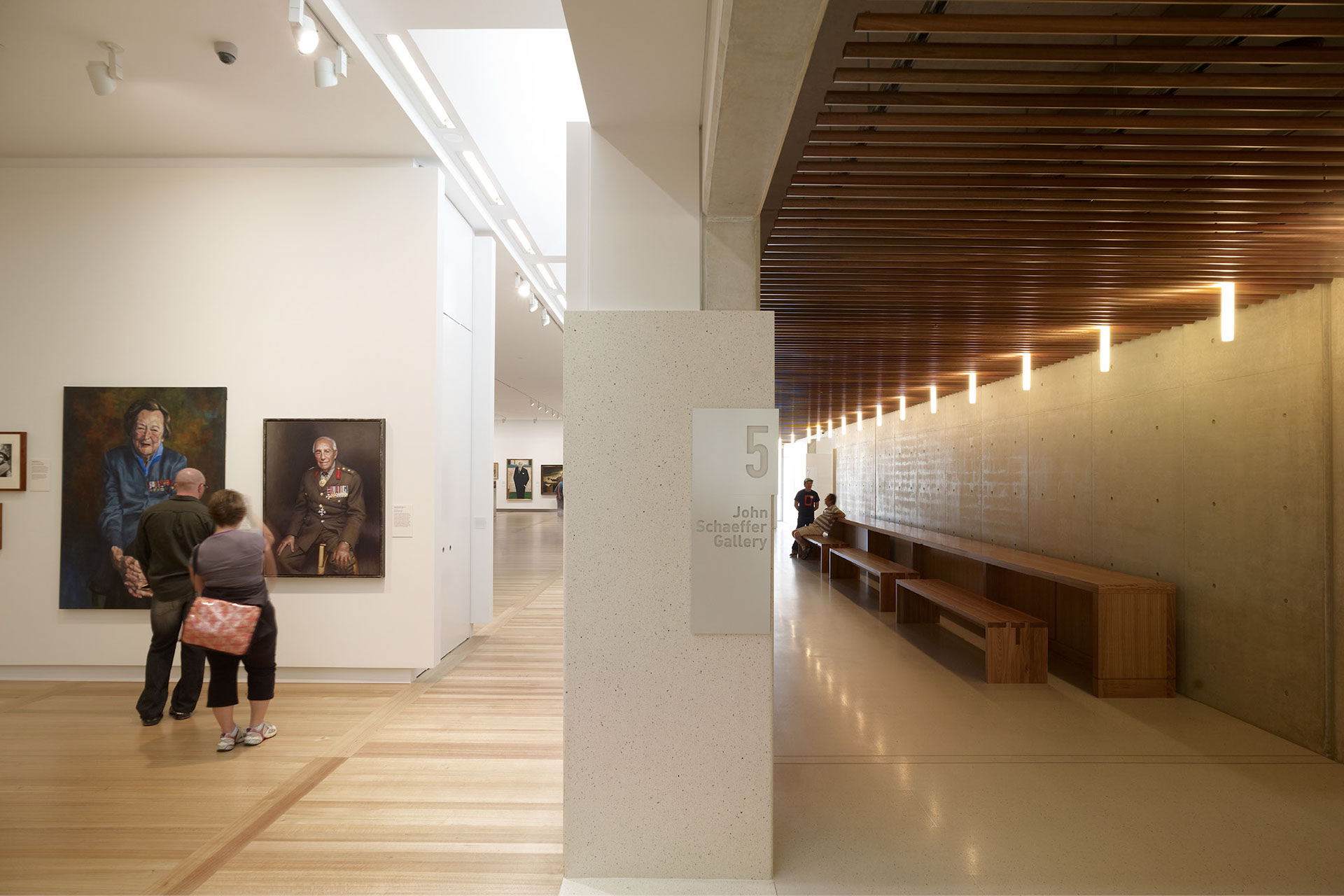
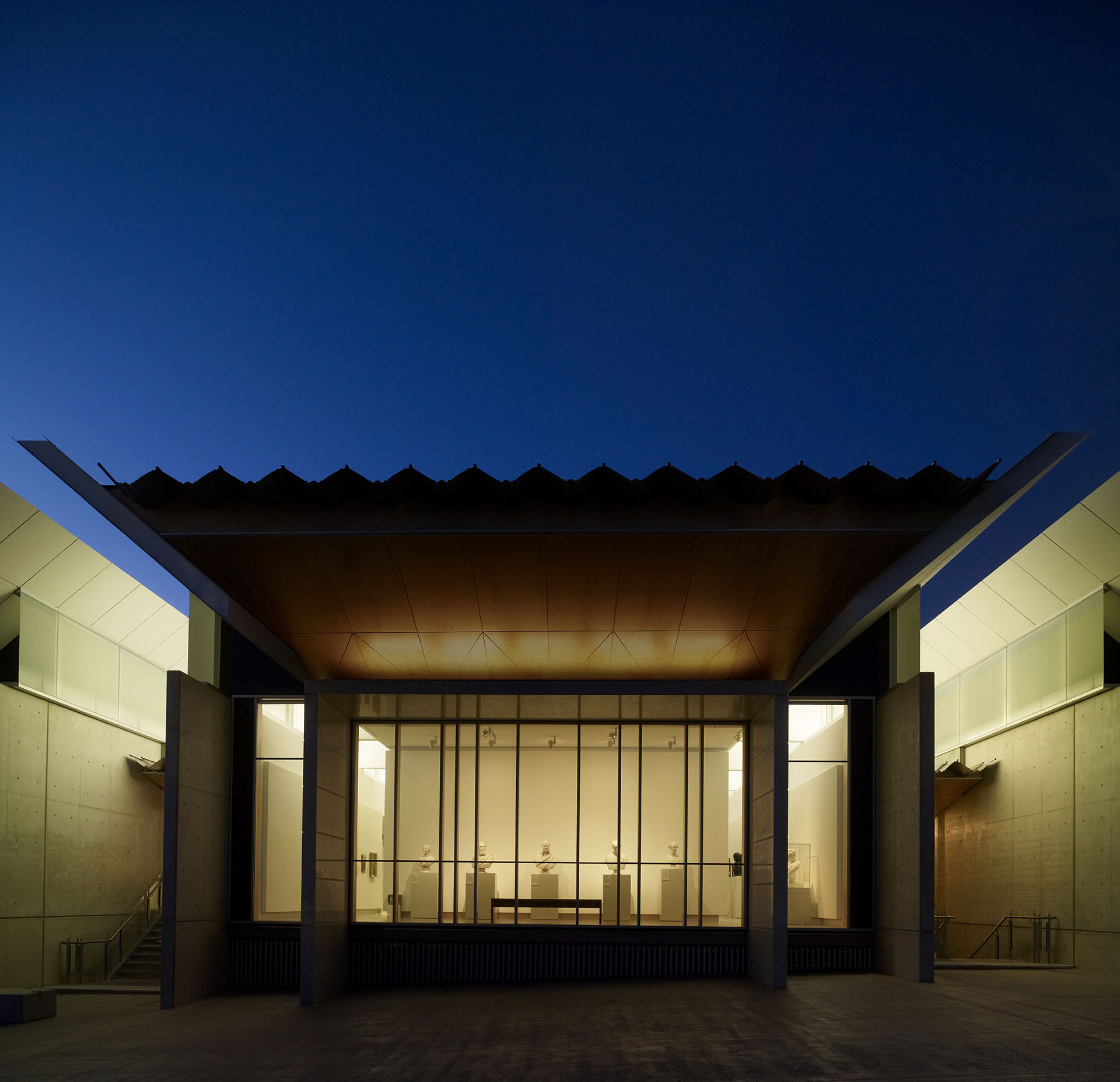
“The National Portrait Gallery had a very clear set of ideas for its purpose-built building, and the building conceived by JPW embodies all of these ideas. But since the building has been opened it has shown another, less tangible but ultimately important side of its character that I can only describe as a sense of well-being, lightness, optimism that touches visitors as they enter and experience it.”
Andrew Sayers
Director, National Portrait Gallery
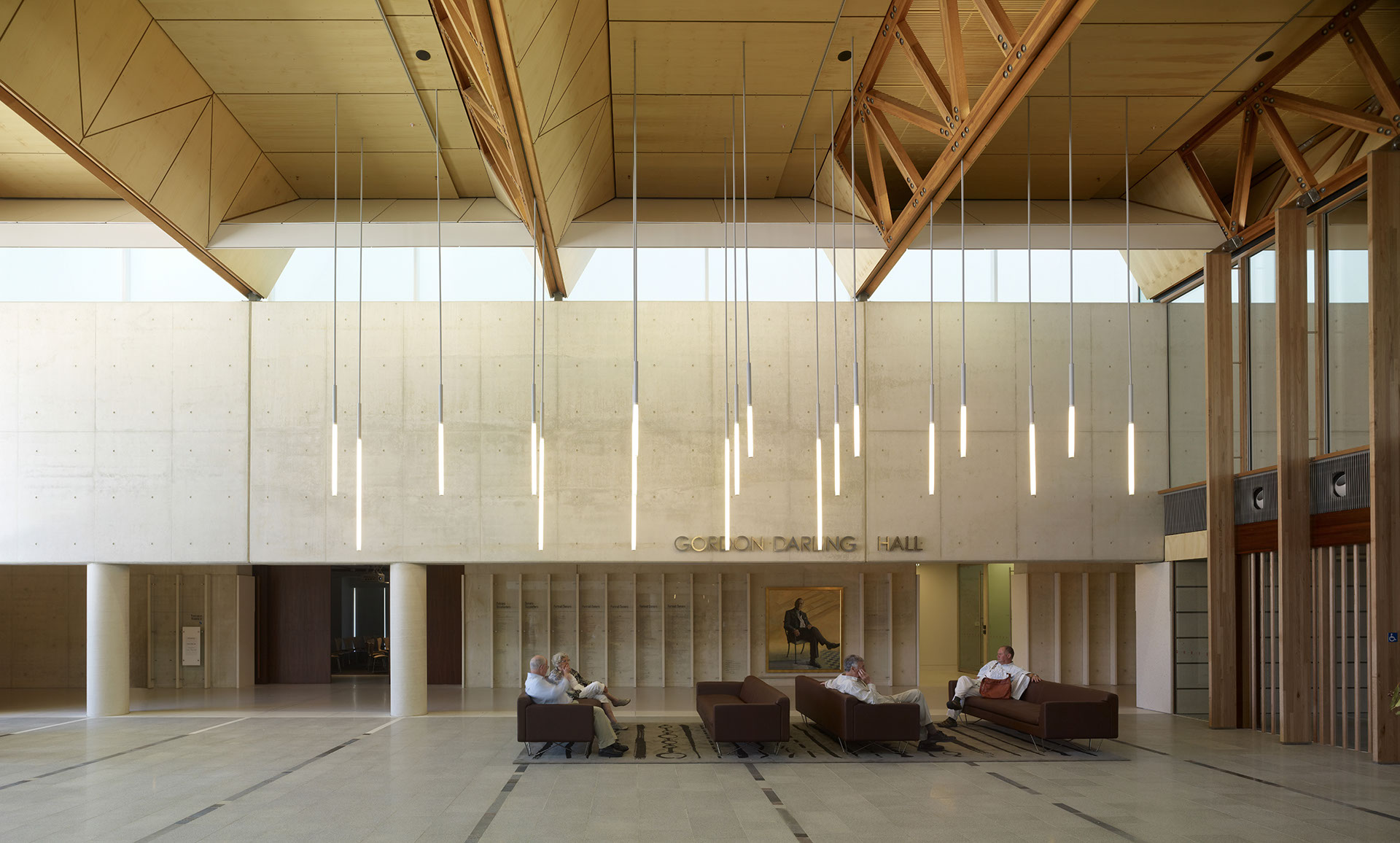
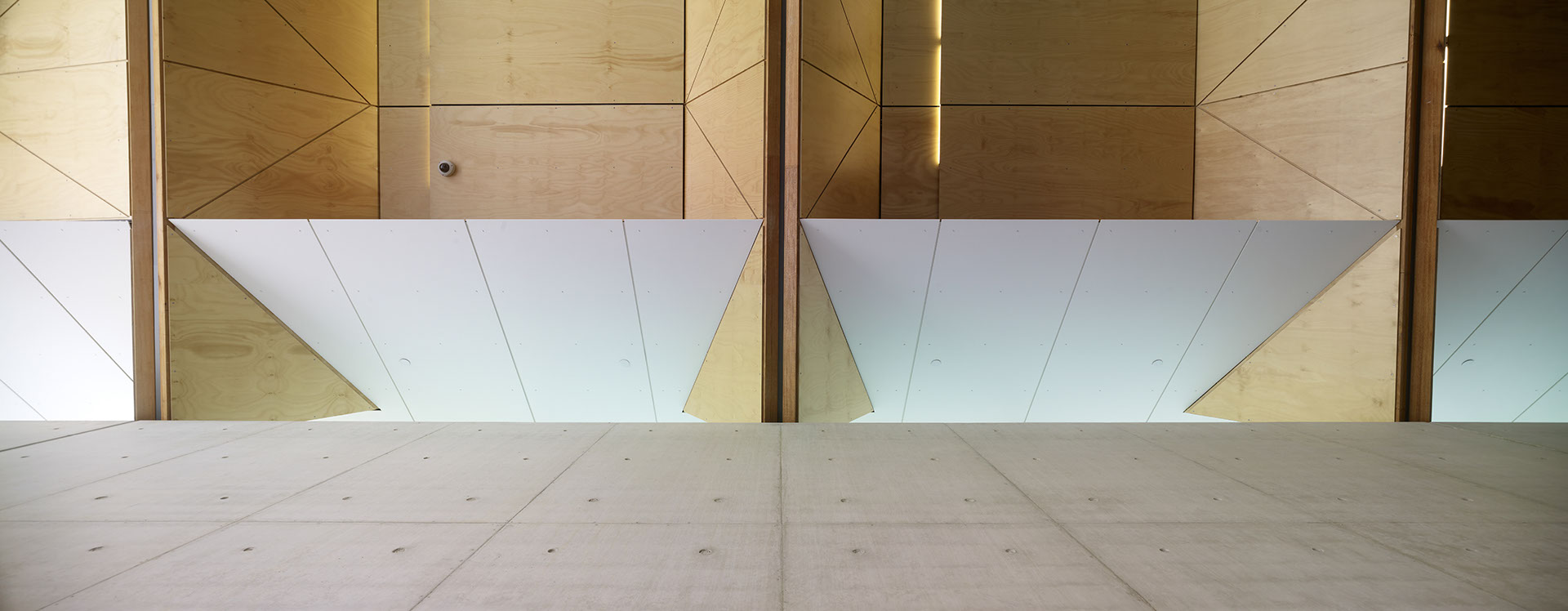
“The controlled natural lighting to the galleries, which will significantly reduce our operating costs throughout the year, makes the most of Canberra’s unique climate, and together with the simple palette of materials and the great connection with the landscape will, I am sure, make this one of the world’s great art museums.”
Andrew Sayers
Director, National Portrait Gallery
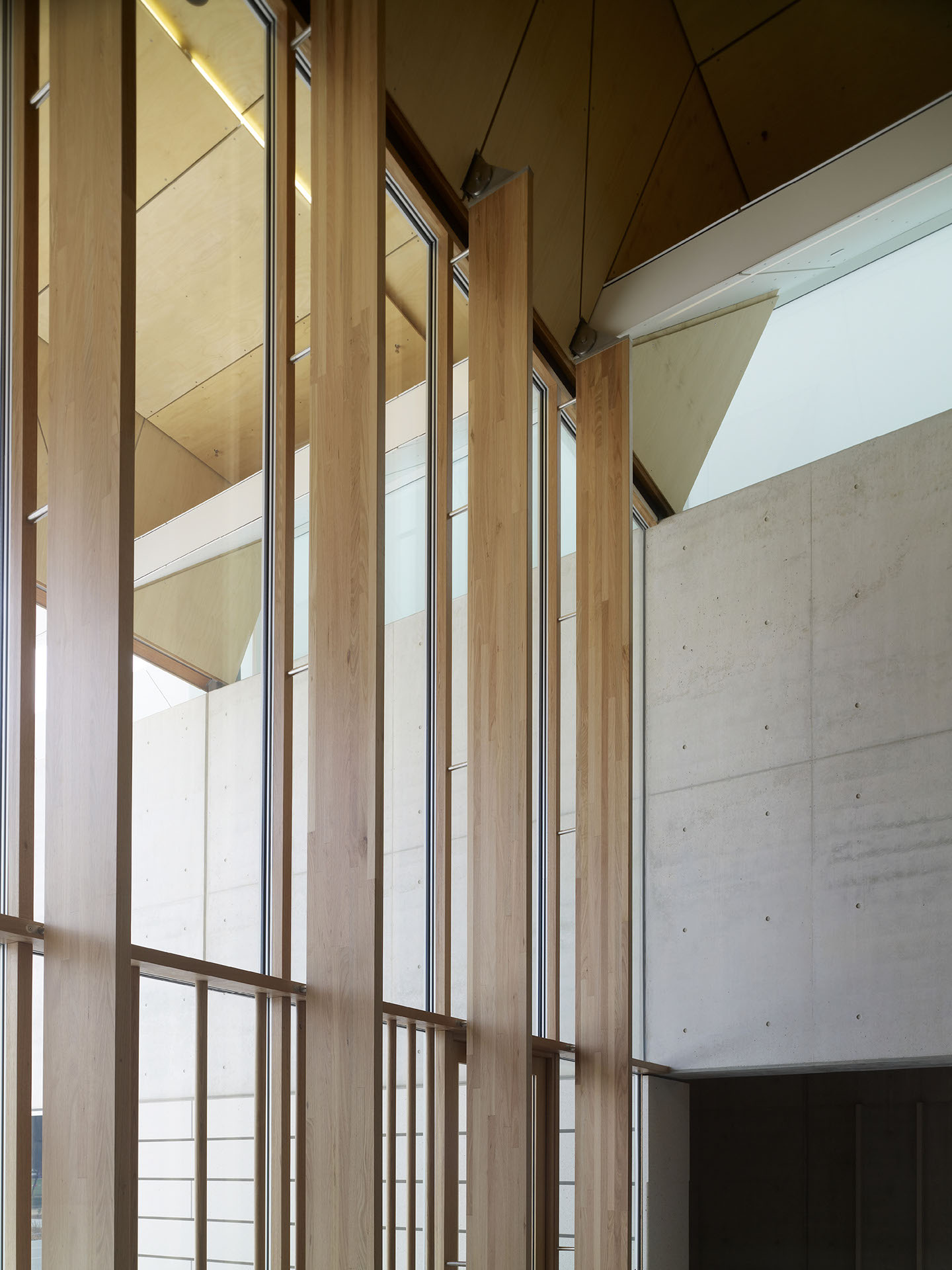

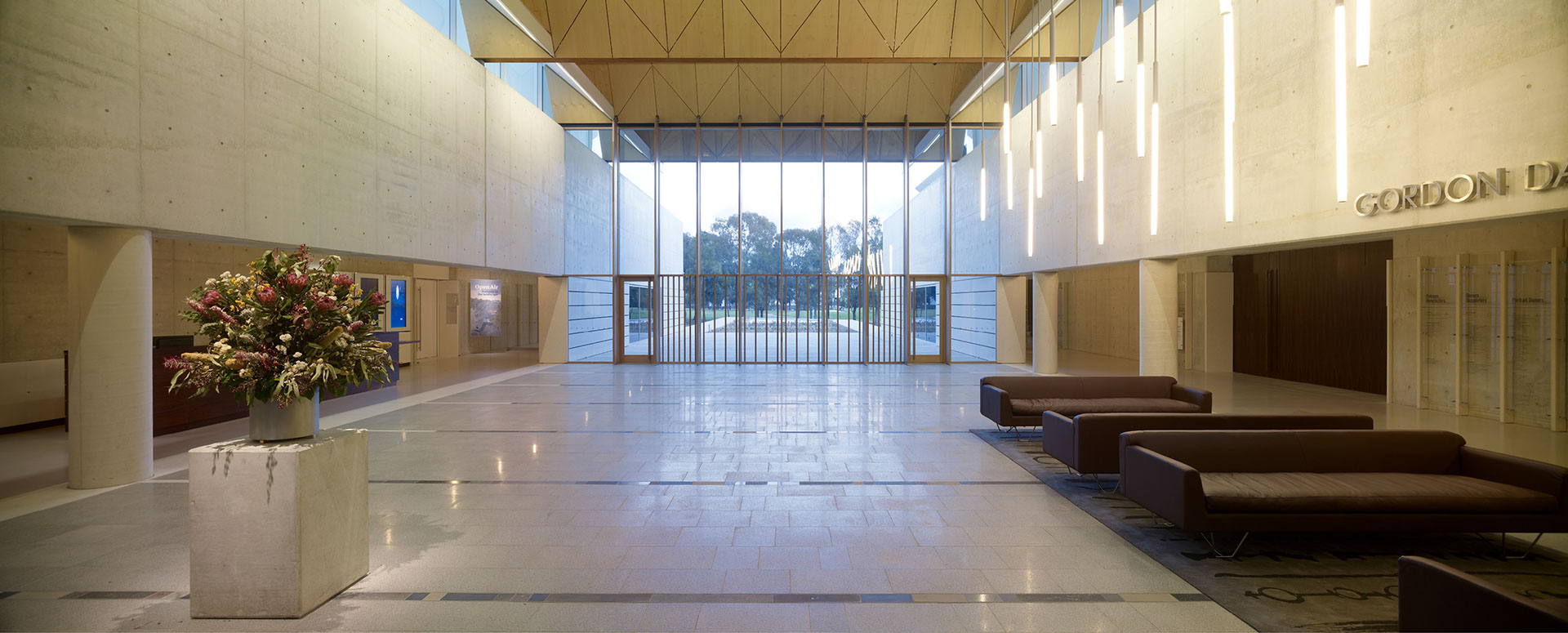
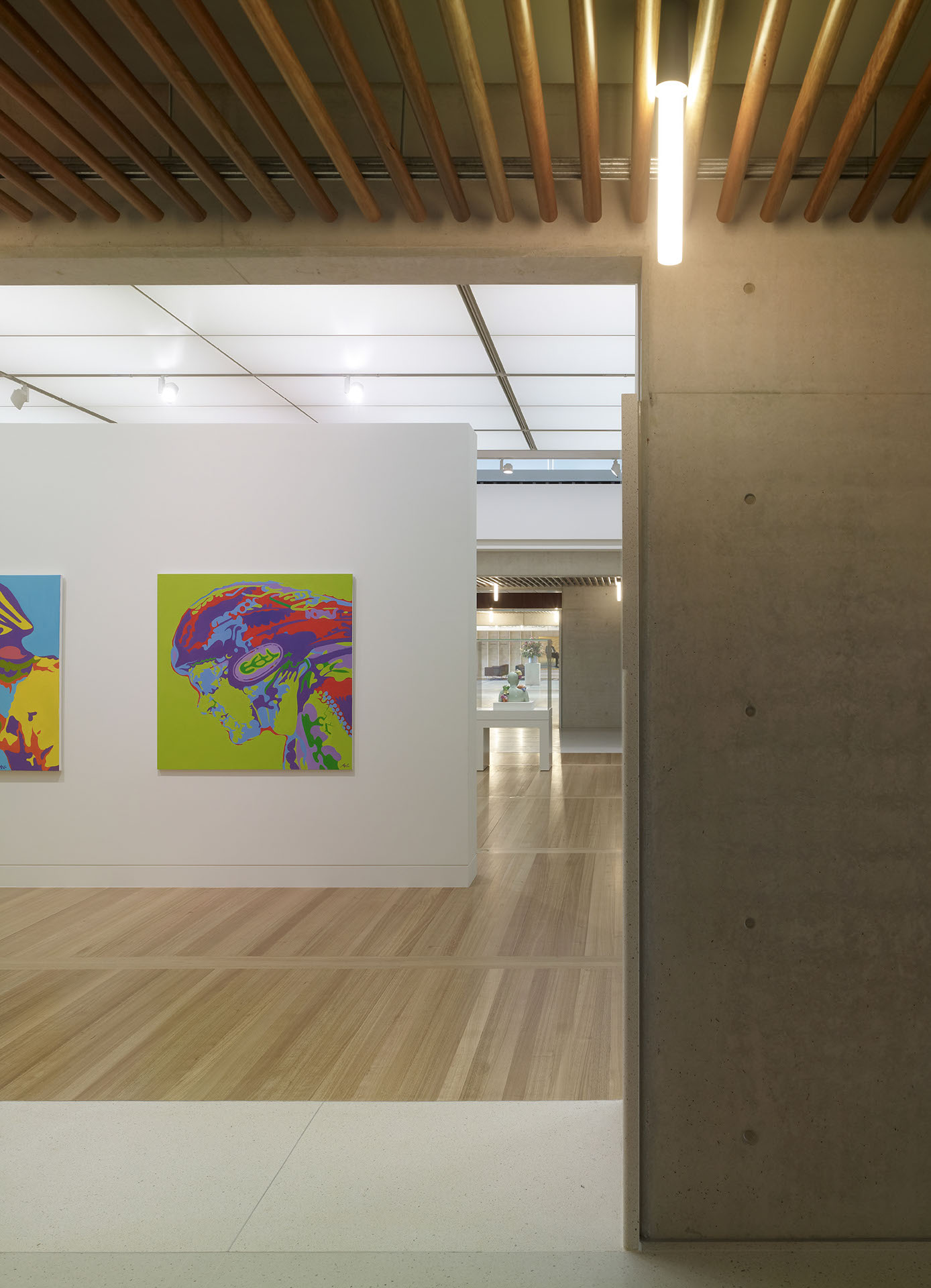
“The seamless use of natural and artificial light provides spaces of great visual quality and a unique visitor experience. Light, natural and artificial, is a hallmark of Australia’s new National Portrait Gallery. This building is certain to become a touchstone for excellence in illumination.”
Jury Citation
Light in Architecture Prize, AIA, 2009
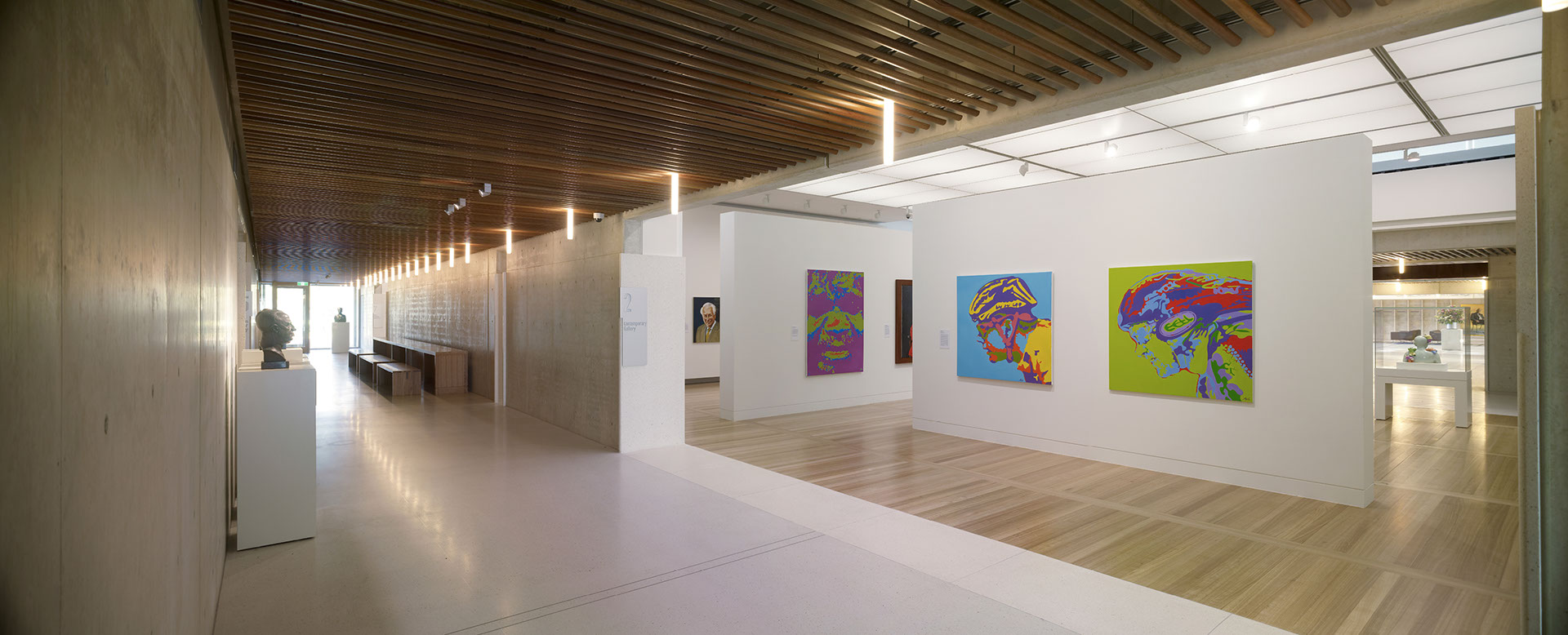
The clarity of planning – with all public spaces on one level – is ideal. Despite the simplicity of the plan, the National Portrait Gallery creates a rich visitor experience and adds a variety of new public and civic spaces to the galleries and visitor facilities that are unique to Canberra. Within the 12 m module defined by the concrete walls, various arrangements of mobile display walls create a flexible range of exhibition spaces.

“At no time does the architecture lose sight of its primary purpose – to display pictures of people for other people to view.”
Jury Citation
Canberra Medallion, 2009
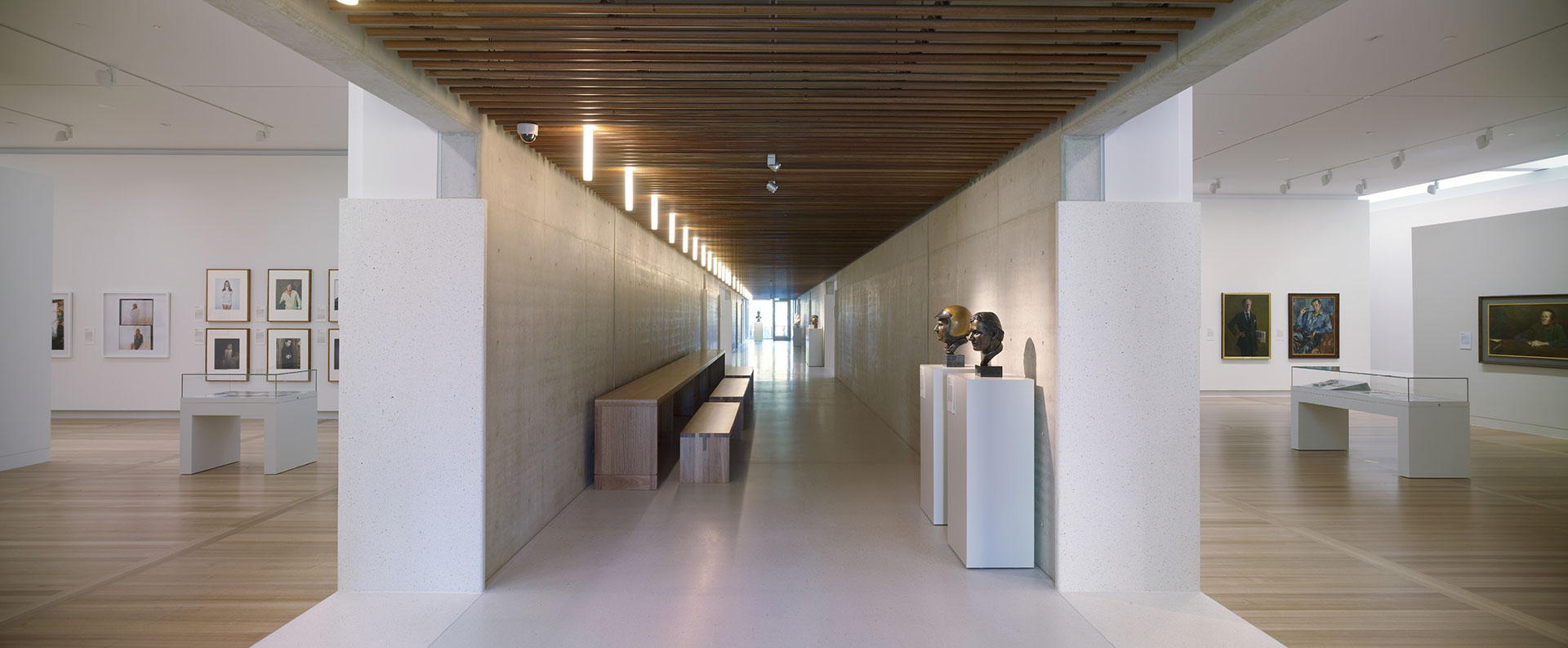
Intimately scaled circulation galleries run between the primary bays and counterpoint the light, airy character of the main galleries and illustrate the crafting of the concrete, timber and other materials. These spaces pace the visitor experience and provide rest and information access points. Unlike many galleries, views in and out of the building are important design strategies to connect visitors to the landscape and passers-by and vice versa, including at night.
Linear plantrooms below these spaces enable energy efficient servicing and maintenance without compromising gallery security. Elsewhere, opportunities for environmentally sustainable strategies such as mixed-mode ventilation, utilisation of the building’s thermal mass, energy efficient plant and rainwater re-use are integrated.
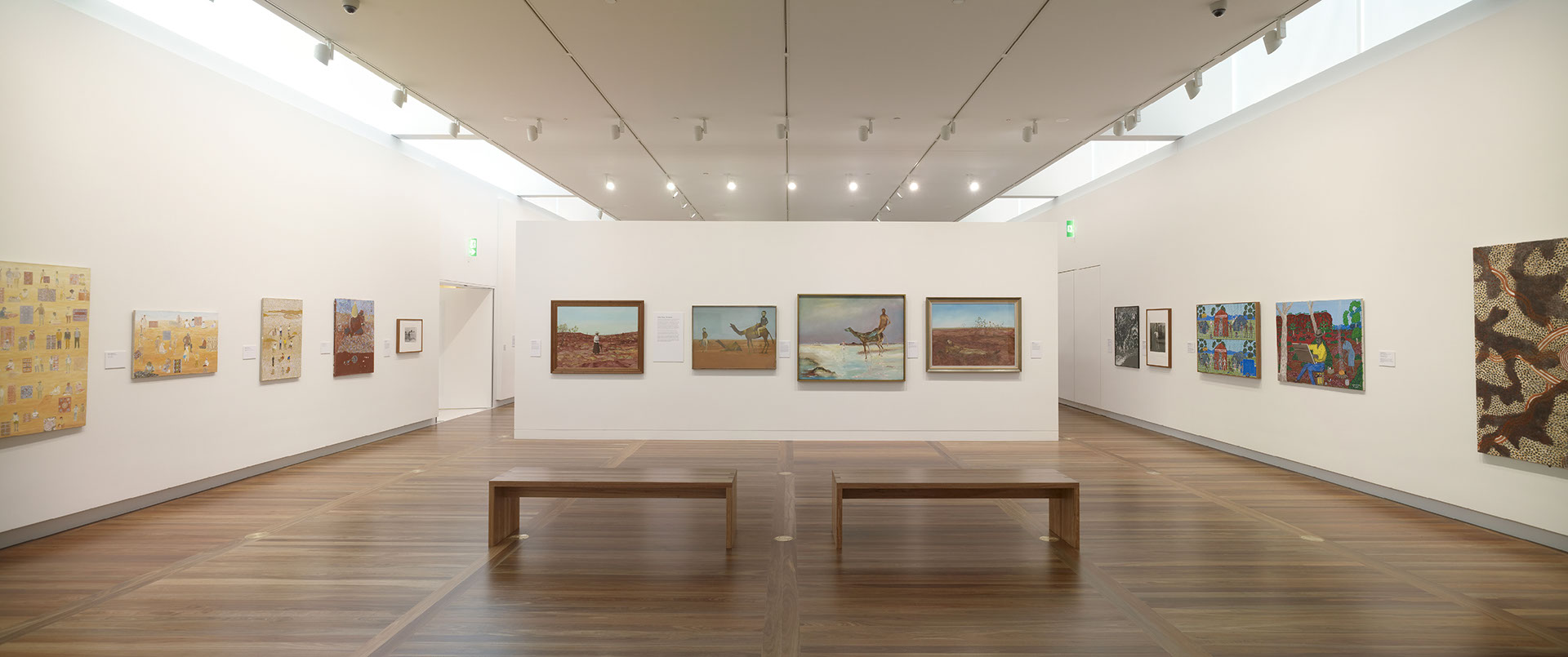
All spaces enjoy controlled natural light from translucent glazed clerestory windows, significantly reducing reliance on artificial lighting. Within the galleries a simple blind system enables control of light levels down to 50 lux for delicate works on paper.
“The National Portrait Gallery is an outstanding work of architectural excellence and a contemporary public building worthy of Australia’s National Capital.”
Canberra Medallion Jury Citation
AIA ACT Awards, 2009
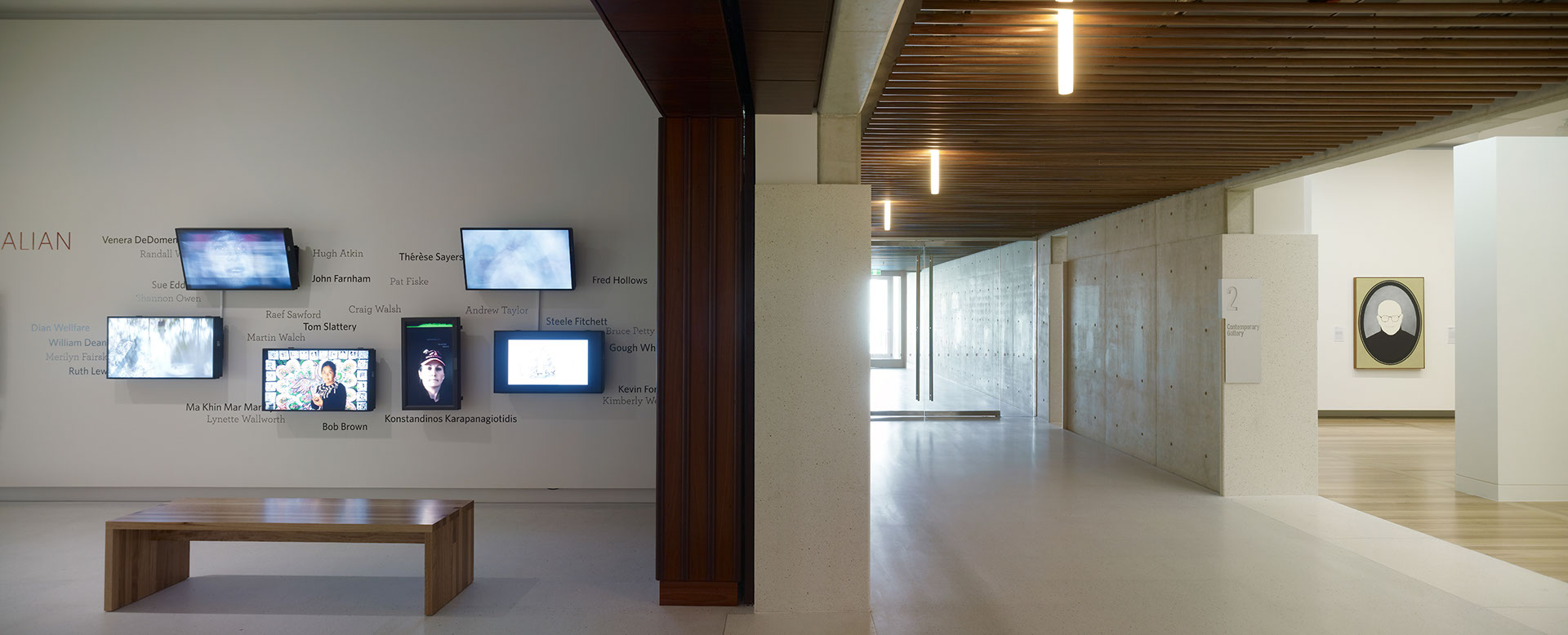
The design is inspired by the Vitruvian notion that the proportion of a building should correspond to that of a person. This is particularly relevant to a building for portraiture and for the scale of works in the collection. The building’s siting in the landscape and relationship to its neighbours, its external form, the internal spaces and the individual components and details are all based on the golden section, a unique proportional relationship that describes a part’s proportion to the whole – creating a harmonious relationship between the visitor, space, material, light and art.
“The commitment to quality, evident from conception through to an almost flawless execution, provides tangible reminders of the potential for concrete to dignify the public domain. The timeless formal balance between material, space and light are almost classical in their refinement and a reminder of the important role of public building in the nation’s capital. Masterful.”
Jury Citation
CCAA Public Domain Awards, 2009

Since opening in 2008, the National Portrait Gallery has received more than 40 national and international awards, including:
Awards
fib Award for Outstanding Concrete Structures – Buildings, 2010
AIA Awards – Sir Zelman Cowen Award for Best Public Building, 2009
National AIA Awards – National Architecture Award for Interior Architecture, 2009
Timber Design Awards – Best Project, 2009
National Winner – Concrete Excellence Awards – Buildings, 2009
National Winner – Concrete Excellence Awards – Kevin Cavanagh Medal, 2009
National Winner – CCAA Public Domain Awards – Walls, 2009
Winner – CCAA Public Domain Awards – Best of State, 2009
Lighting Award of Excellence from the Illuminating Engineering Society of Australia and New Zealand, NSW/ ACT chapter, 2009
Highly Commended – Buildings & Structures, Engineering Excellence Awards – National Portrait Gallery, 2009